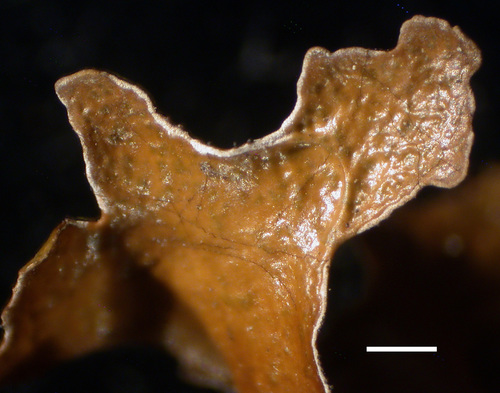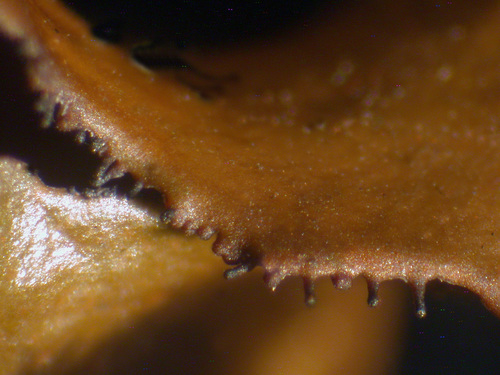Click on Characteristic name for explanation. Click on image for larger version.
|
Cetraria subalpina
| Overview
| | PNW Range: | | | West side | Uncommon
| | East side | Rare
| | Immediate coast | None
| | Alpine or subalpine | Uncommon
| | Habitat: | Typically in semi-open to open subalpine forests, rarely to middle elevations in the mountains, mostly not in true alpine areas.
| | Substrate: | Most common on bases of ericaceous shrubs and other woody plants; occasionally on bases of conifers or spreading onto the ground.
| | Comments: |
| | Synonymy: | Tuckermannopsis subalpina, Nephromopsis subalpina
|
|

Lobe tips
by B. McCune
2/3

Pycnidia, marginal
by B. McCune
3/3
Scale: Bar=1mm unless noted
|
|
|
|
|